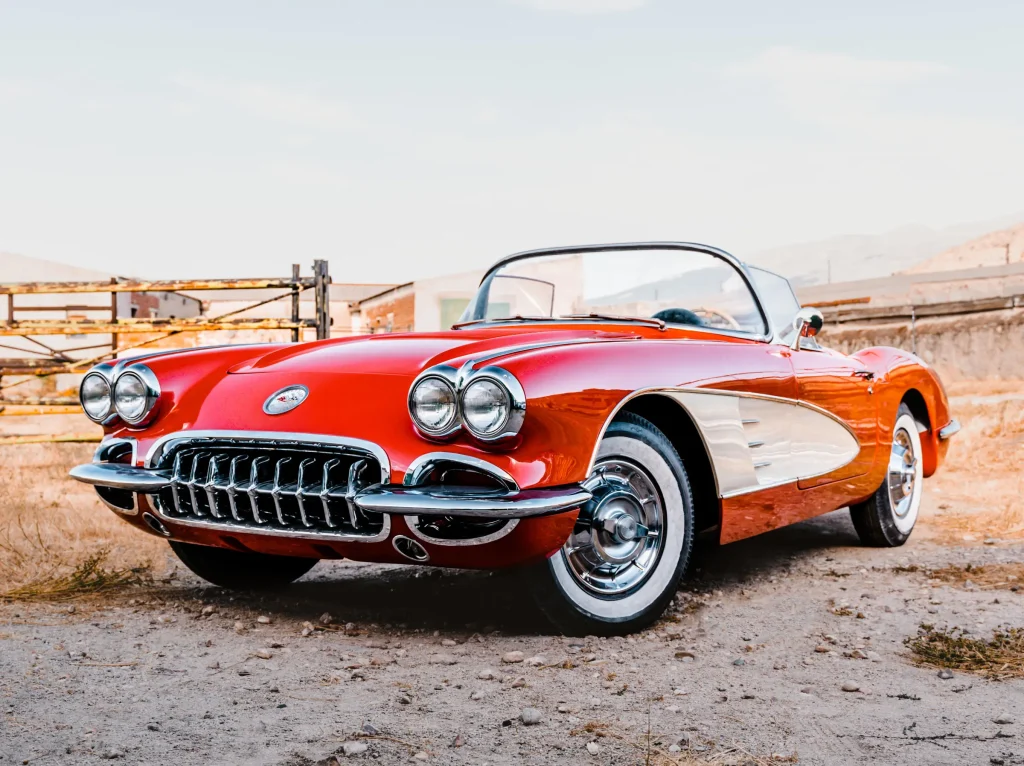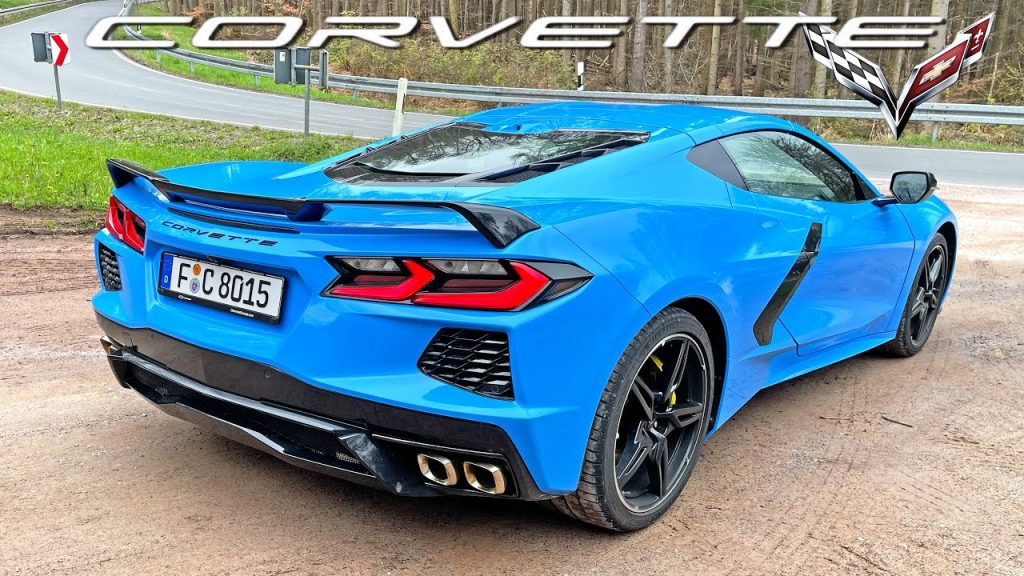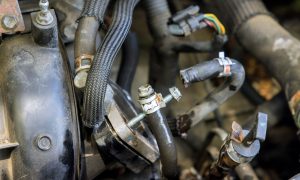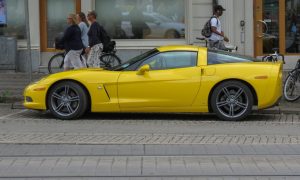The Chevrolet Corvette isn’t just a car—it’s a cultural icon, a symbol of American power, performance, and flair. But how many Corvette generations are there? The answer reveals a legacy spanning over seventy years of thrilling designs and mechanical ingenuity.
The Legacy of the Chevrolet Corvette
Chevrolet’s Corvette has captivated drivers since its debut in 1953. The Corvette’s powerful engines, sleek lines, and iconic status in American automotive culture have made it one of the most revered sports cars in history. From the earliest six-cylinder engine model to the latest mid-engine marvel, each generation of the Corvette has left its own unique mark. Understanding how many Corvette generations are there requires us to dive into each era of innovation, style, and performance.
Overview of Corvette Generations
The Corvette’s journey is divided into eight generations, each marking a unique chapter in automotive excellence. Let’s break down each generation, from the first 1953 model to the latest mid-engine C8.
C1 (1953-1962)

- Introduction: The first-generation Corvette, also known as the C1, set the stage for America’s most famous sports car. Debuting in 1953 with a 165-hp six-cylinder engine, this sleek roadster made a statement.
- Distinctive Features: The early models sported a fiberglass body—revolutionary for the time—and a two-speed automatic transmission.
- Power Upgrades: Over its lifespan, the C1 saw major performance upgrades, with the 1955 model getting a 4.3-liter Small Block V8 engine, and the introduction of fuel injection for higher performance in 1957.
- Notable Models: The 1962 model featured the first 327-cubic-inch V8 engine, capable of producing up to 360 horsepower, giving the C1 a fitting end to its reign.
C2 (1963-1967)
- Introduction: Known as the Sting Ray, the second-generation Corvette became iconic for its cutting-edge design and performance.
- Design Highlights: The C2 introduced the “split rear window” and a more aerodynamic design, defining the look of American sports cars in the 60s.
- Performance Leap: The C2 featured engines like the 327C.I. V-8, and later introduced the 427-cubic-inch engine, delivering up to 435 horsepower in the ZR1 model.
- Technological Advancements: The C2 introduced four-wheel disc brakes, enhancing safety and control, and also featured independent rear suspension for improved handling.
C3 (1968-1982)
- Introduction: The third-generation Corvette, or C3, is perhaps one of the most recognizable Corvettes thanks to its long production run and distinctive “shark” body style.
- Design Evolution: This generation featured more angular body styling, with “T-top” removable roof panels and a more aggressive design that spoke to the muscle car era.
- Engine Power: The early C3s offered impressive options like the 427-cubic-inch (7.0 L) engine, producing 435 horsepower. Later models, such as the 1975 Corvette, suffered from emissions-strangled performance, dropping to just 165 horsepower.
- Special Models: The 25th-anniversary model in 1978 and the introduction of the 1982 Collector’s Edition model were highlights of the C3’s production run.
C4 (1984-1996)
- Introduction: The fourth-generation Corvette was a leap into a modern design and featured advanced technology. The C4 made its debut with an all-new 5.7-liter Small Block engine.
- Aerodynamic Design: With a low drag coefficient, the C4 brought a more futuristic design to the Corvette lineup, emphasizing fuel economy and performance.
- Performance Enhancements: Later models saw the introduction of the ZR-1, known as the “best-handling production car” of its time. The 1990 ZR-1 featured a 375-hp Corvette with a powerful version of the Small Block V8.
- Technological Innovations: The C4 was the first Corvette to feature a digital dashboard and optional performance data recorder, which added a modern twist to driving.
C5 (1997-2004)
- Introduction: The fifth-generation Corvette marked significant improvements in comfort, power, and versatility, making it one of the most well-rounded models in Corvette history.
- Design Improvements: Featuring a stiffer, lighter frame, the C5 included a rear transaxle and an improved weight distribution for better handling.
- Engine Options: The base V8 engine—a 5.7-liter unit—delivered 345 horsepower. A 405-hp version was introduced in the Z06 model, enhancing Corvette’s performance appeal.
- Convertible Options: The C5 introduced a convertible body style that emphasized open-road freedom, with the sixth generation taking cues from these improvements.
C6 (2005-2013)
- Introduction: With the C6, the Corvette’s design team focused on refining the iconic sports car. Smaller, sleeker, and faster, the sixth-generation model truly represented the evolution of American sports cars.
- Performance Upgrade: Featuring the all-new 6.2-liter V8 engine, the C6 delivered up to 436 horsepower with the optional performance exhaust. It also introduced the LS7 engine—a 7.0-liter monster capable of producing 505 horsepower in the Z06 model.
- Notable Features: The C6 introduced advanced features like an optional head-up display, making driving more immersive and engaging. The ZR1, launched in 2009, brought a supercharged 6.2-liter V8 with 638 horsepower, making it the most powerful version of the Corvette at that time.
C7 (2014-2019)

- Introduction: The seventh-generation Corvette revived the Stingray name and brought the Corvette into a new era with a focus on modern technology and performance.
- Design Elements: With an aggressive design, the C7’s styling was more angular and purposeful. The use of carbon fiber body panels reduced weight, contributing to improved vehicle dynamics.
- Performance Focus: The C7 featured a 6.2-liter V8 engine capable of producing 455 horsepower, or 460 hp with the optional performance exhaust. The C7 ZR1 model, launched in 2019, delivered an astonishing 755 horsepower with 715 lb-ft of torque.
- Technological Leap: The C7 introduced advanced suspension systems like Magnetic Ride Control, providing both comfort and a sporty drive when needed.
C8 (2020-Present)
- Introduction: The eighth-generation Corvette, or C8, made waves by introducing a mid-engine design—a bold step that redefined the Corvette’s capabilities.
- Mid-Engine Layout: This design change moved the engine behind the driver for better rear weight distribution and enhanced performance. It was the first mid-engine Corvette in its 67-year history.
- Performance Specs: Powered by a 6.2-liter V8 engine, the base C8 delivers 495 horsepower and 470 lb-ft of torque, capable of a 0-60 time in under three seconds when equipped with the Z51 Performance Package.
- Technological Innovations: The C8 introduced the 8-speed dual-clutch transmission, a first for the Corvette, providing rapid and precise gear changes, giving it the feel of a true supercar.
Significant Features of Each Generation
Each Corvette generation brought with it unique features that pushed the boundaries of automotive design and performance. Let’s look at how these defining aspects evolved over time.
Design Changes Over the Years
- C1 to C2: From the sleek design of the first-generation Corvette to the Sting Ray’s more angular body style, each era introduced fresh aesthetic appeal that captured the imagination.
- C3 to C4: The introduction of the “shark” body of the C3 gave way to a sleeker, more futuristic design in the C4, with a focus on reducing drag.
- C5 to C6: The shift to a lighter frame with a rear transaxle in the C5 set the stage for the compact, performance-oriented look of the C6.
- C7 to C8: Perhaps the most significant design change came with the C8, introducing a mid-engine layout and a modern, angular design, a radical departure from the front-engine layout of previous generations.
Technological Advancements
- C2 Sting Ray: Four-wheel disc brakes, independent rear suspension—groundbreaking features that helped the Corvette compete with European sports cars.
- C4 Digital Dashboard: The first Corvette to sport a digital dashboard, adding a tech-forward experience.
- C7 Magnetic Ride Control: A sophisticated suspension system that allowed the C7 to adapt on the fly for comfort and performance.
- C8 Mid-Engine Design: The move to a mid-engine layout in the C8 marked a radical shift, optimizing handling and weight distribution for a supercar-like driving experience.
Performance Enhancements
- C3 Muscle Power: The early C3 models packed 427-cubic-inch engines producing over 400 horsepower, epitomizing the raw muscle car era.
- C5 Z06: The introduction of the 405-hp Z06 model, with its lightweight frame and advanced suspension, represented a serious step up in track capability.
- C6 ZR1: The 2009 ZR1 came equipped with a supercharged 6.2-liter engine, making it the most powerful version yet, with 638 horsepower and 604 lb-ft of torque.
- C8 Acceleration: With a 0-60 mph time of under 3 seconds, the C8 took performance to a whole new level, rivaling high-end European sports cars.
Highlights and Milestones in Corvette History
- 1953: The first Corvette rolls off the assembly line in Flint, Michigan, with only 300 produced, all in Polo White.
- 1963: Introduction of the split rear window Sting Ray, one of the most iconic Corvette designs.
- 1981: Production moves to Bowling Green, Kentucky, which has been Corvette’s home ever since.
- 2009: The C6 ZR1 breaks records, becoming the most powerful production Corvette with a top speed of over 200 mph.
- 2020: The eighth-generation Corvette introduces a mid-engine layout, revolutionizing the Corvette’s design philosophy.
The Influence of the Corvette in Automotive Culture
The Corvette isn’t just a car; it’s an American cultural phenomenon. For decades, it has appeared in movies, music, and media, embodying the spirit of freedom and performance. From Harley Earl’s original vision to the mid-engine marvel of today, the Corvette has inspired countless automotive enthusiasts around the world.
- Pop Culture Icon: The Corvette has appeared in countless movies and TV shows, including “Route 66” and “Corvette Summer,” cementing its place as a pop culture icon.
- Collector’s Dream: Special models like the 50th anniversary edition and the 40th-anniversary Corvette are highly sought after by collectors, showcasing the enduring appeal of this American legend.
- Performance Inspiration: With each generation, the Corvette has inspired other automakers to push the boundaries of performance, continually setting new benchmarks in the sports car category.
Overview of Notable Models within Each Generation
- C1 (1953-1962): The 1957 fuel-injected model was a standout, offering 283 horsepower and turning the Corvette into a true performance machine.
- C2 (1963-1967): The L88 was introduced in 1967, an absolute powerhouse that was essentially a race car in disguise.
- C3 (1968-1982): The 1970 LT-1 featured a 350-cubic-inch engine producing 370 horsepower, making it one of the most revered C3 models.
- C4 (1984-1996): The 1990 ZR-1, known as the “King of the Hill,” featured a 375-horsepower engine developed in collaboration with Lotus.
- C5 (1997-2004): The C5 Z06 model became a performance bargain, offering 405 horsepower and exceptional handling.
- C6 (2005-2013): The ZR1, featuring a supercharged 6.2-liter engine, offered 638 horsepower and 604 lb-ft of torque.
- C7 (2014-2019): The 2019 ZR1 was the most powerful Corvette ever built, with a 755-hp engine and 715 lb-ft of torque.
- C8 (2020-Present): The 2024 Corvette E-Ray marks the introduction of hybrid-powered Corvettes, blending electric and V8 power for an all-new performance experience.
The Impact of Mid-Engine Design in the C8

The introduction of the mid-engine Corvette fundamentally changed what the Corvette was and could be. By relocating the engine behind the driver, Chevrolet was able to achieve near-perfect weight distribution, dramatically improving the C8’s handling and balance.
- Supercar Rivals: With its mid-engine layout, the Corvette C8 directly competes with high-end European sports cars, bringing supercar performance at a fraction of the cost.
- Driver Experience: The passenger compartment’s placement closer to the front axle gives drivers a unique feeling of connection with the road, enhancing the thrill of driving.
- Performance Boost: With 495 horsepower and a 0-60 time of 2.9 seconds, the C8 is the fastest base model Corvette ever, setting new performance benchmarks.
Conclusion
The Corvette has evolved through eight incredible generations, each bringing groundbreaking changes in design, performance, and technology. From the classic, front-engine muscle cars to the modern, mid-engine supercar, the Corvette continues to push the envelope, capturing the hearts of car enthusiasts everywhere.
ALSO READ: Why Does My Car Smell Like Popcorn?
FAQs
The 2019 Corvette ZR1 from the C7 generation was the most powerful, boasting 755 horsepower and 715 lb-ft of torque.
The eighth-generation Corvette, also known as the C8, introduced the mid-engine design in 2020.
There are eight Corvette generations, starting from the C1 in 1953 to the current C8 model, which began production in 2020.
The 2020 Corvette C8 with the Z51 Performance Package has a 0-60 time of under 3 seconds, making it one of the fastest Corvettes ever.




